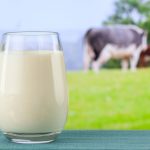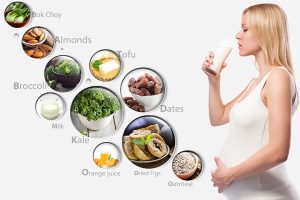 Do you drink a glass of milk every day, eat cheese or natural yogurt? They contain the minimum daily calcium intake for an adult. Those who do not tolerate dairy products or do not have them every day will be glad to find out that there are alternative sources of calcium. Adults should consume about 1000 mg of calcium per day. Exactly this amount is contained in one glass of skim milk, one thick slice of cheddar cheese and one pack of natural yogurt but these products should not be the only ones.
Do you drink a glass of milk every day, eat cheese or natural yogurt? They contain the minimum daily calcium intake for an adult. Those who do not tolerate dairy products or do not have them every day will be glad to find out that there are alternative sources of calcium. Adults should consume about 1000 mg of calcium per day. Exactly this amount is contained in one glass of skim milk, one thick slice of cheddar cheese and one pack of natural yogurt but these products should not be the only ones.
You should take into account not only the amount of calcium contained in the products, but also how well calcium is absorbed. Assimilation of calcium depends, first of all, on the form of this mineral. In different products, calcium is presented in different forms and in combination with other microelements, which is also important for its assimilation. And remember: to get calcium, the body also needs vitamin D. Therefore, it is so important to eat non-dairy products that contain not only calcium.
Contents
- What role does calcium play for the human’s organism?
- 7 Important Functions Calcium Performs in Our Body:
- 1. Dairy products as the source of calcium
- 2. Eggshell as the source of calcium
- 3. Seeds and nuts as the source of calcium
- 4. Vegetables, fruits and greenery as the source of calcium
- 5. Fish as the source of calcium
- Video
What role does calcium play for the human’s organism?
 The most common answer to this question will be: “For the strength of bones.” In fact, the use of this mineral is of far greater importance, being the source of human life at all stages of its development. You probably will be surprised but even with the movement of the sperm to the ovum the energy of motion comes from this microelement. At the tip of the sperm, which carries DNA, there is a tip of calcium that helps penetration through the shell of the ovum. After the birth of the baby, the body needs the calcium for normal development and active growth. Therefore, the expectant mother should take care of calcium replenishment in advance of the body’s preparation for pregnancy. With age many metabolic processes are slowing down, including the absorption of calcium. At the same time, the processes of its washing are accelerated. Therefore, if a newborn baby needs 400 mg, then after 65 – 1200 mg of a microelement per day is required.
The most common answer to this question will be: “For the strength of bones.” In fact, the use of this mineral is of far greater importance, being the source of human life at all stages of its development. You probably will be surprised but even with the movement of the sperm to the ovum the energy of motion comes from this microelement. At the tip of the sperm, which carries DNA, there is a tip of calcium that helps penetration through the shell of the ovum. After the birth of the baby, the body needs the calcium for normal development and active growth. Therefore, the expectant mother should take care of calcium replenishment in advance of the body’s preparation for pregnancy. With age many metabolic processes are slowing down, including the absorption of calcium. At the same time, the processes of its washing are accelerated. Therefore, if a newborn baby needs 400 mg, then after 65 – 1200 mg of a microelement per day is required.
Back
7 Important Functions Calcium Performs in Our Body:
 Teeth and bones: the main function of the macroelement is the function of the structural material, the creation and maintenance of full teeth and bones. As part of the bone tissue, calcium is contained in two forms: free and bound. If the reserves of mineral matter in the free form are depleted, calcium is extracted from the bones to maintain its level in the blood. Every year, the bone is renewed in the body of an adult by 20%.
Teeth and bones: the main function of the macroelement is the function of the structural material, the creation and maintenance of full teeth and bones. As part of the bone tissue, calcium is contained in two forms: free and bound. If the reserves of mineral matter in the free form are depleted, calcium is extracted from the bones to maintain its level in the blood. Every year, the bone is renewed in the body of an adult by 20%.- Reduction of muscle tissue: calcium affects the contraction of the muscles and, acting on the heart muscle, coordinates the heartbeat.
- CNS: required for the transmission of nerve impulses, activating the action of enzymes involved in the synthesis of neurotransmitters.
- Cardiovascular system: together with magnesium, potassium, sodium calcium regulates blood pressure.
- Blood system: strengthens the action of vitamin K (prothrombin), which is the main factor of normal blood clotting.
- Cell Membranes: Calcium affects the permeability of membranes, it is required to transport nutrients and other compounds through cell membranes, and also to strengthen connective tissue cells.
- Other functions: helps to strengthen the immune system, the synthesis and activation of many enzymes and hormones (has a desensitizing and anti-inflammatory effect on the function of the endocrine glands), which take part in the digestion of food, saliva synthesis, fat metabolism and energy metabolism.
Back
1. Dairy products as the source of calcium
 The honorable first place is taken by dairy products. All of us from childhood know that you need to drink milk because it contains a lot of calcium, which is necessary for bone growth. But, it turns out, milk is far from being the record holder in terms of the amount of Ca among dairy products. Hard cheese can boast with the larger amount of calcium – about 1000 mg per 100 grams of product. For comparison, this is the daily norm for an adult.
The honorable first place is taken by dairy products. All of us from childhood know that you need to drink milk because it contains a lot of calcium, which is necessary for bone growth. But, it turns out, milk is far from being the record holder in terms of the amount of Ca among dairy products. Hard cheese can boast with the larger amount of calcium – about 1000 mg per 100 grams of product. For comparison, this is the daily norm for an adult.
Things to keep in mind:
- Children under 8 years need 800 mg of Ca, and from 9 to 18 – 1,300 mg.
- Most calcium is needed for pregnant women – about 2000 mg per day.
In addition, due to the content of lactose in dairy products, calcium is absorbed faster and better. The content of calcium in cheese depends on the type and manufacturer of cheese. Most of the calcium can be found in parmesan – 1 376 mg / 100 g. Approximately 80 to 100% of the daily norm of calcium is in other hard cheese varieties like cheddar, Gruyer, Dutch and Swiss. However, before you diligently replenish the supply of calcium in the body with cheese, remember that all varieties are very caloric.
Important: The lower the fatness of dairy products, the higher the content of Ca in it.
Back
2. Eggshell as the source of calcium
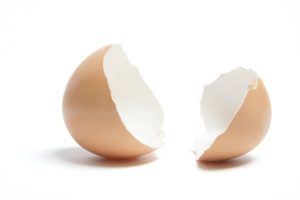 The egg shell is 90% calcium carbonate. But this is not the calcium carbonate that can be bought as a food additive! That carbonate is far from the best kind of calcium additives for digestibility and has such a possible side effect in case of an overdose, as a deadly dairy-alkaline syndrome. And this calcium carbonate is absorbed much better and is naturally eliminated from the body in case of its excess.
The egg shell is 90% calcium carbonate. But this is not the calcium carbonate that can be bought as a food additive! That carbonate is far from the best kind of calcium additives for digestibility and has such a possible side effect in case of an overdose, as a deadly dairy-alkaline syndrome. And this calcium carbonate is absorbed much better and is naturally eliminated from the body in case of its excess.
As a source of calcium, it is best to use the shell of quail eggs, not chicken eggs. There are several reasons for this:
- The shell of quail eggs is often used as a mineral supplement because of the presence of a large number of mineral substances in its composition: calcium (90%), iron, magnesium, silicon, zinc, fluorine, sulfur, molybdenum, etc.
- The shell of quail eggs has some advantages over the shell of chicken eggs, although they are similar in mineral composition.
- The shell of quail eggs, like the egg itself, does not contain antibiotics and toxic substances, unlike chicken eggshells.
- Quail eggshell is thin and fragile, when grinding turns into flour, which is easy to eat.
Minerals from raw eggshell are well absorbed, but do not lead to an overabundance – all excess is excreted from the body. Boiled eggshell is digested worse and when it is used, it is necessary to more accurately observe the dosage. Most recommendations look like this:
- Shell from three quail eggs a day – for an adult,
- Shell from two quail eggs – for a child over 7,
- Shell from one quail egg – for a child from 1 to 7.
Quail eggs are taken in three different ways:
Method of using shell from quail eggs №1:
Eat the shell with the egg.
Method of using shell from quail eggs №2:
The shell should be washed and must be cleaned of the inner film. Grind in a coffee grinder or manually – in a mortar. Take in the form of powder (for better absorption before use add a few drops of lemon juice). Wash down with water.
Method of using shell from quail eggs №3:
Wash, clean and grind the shell, as in method number 2.Pour a teaspoon of chopped shell with a liter of water at room temperature and mix. Infuse for 6 hours. Use water for making soups and herbal teas and decoctions.
Important: Children under one year of age are not recommended to use eggshell as the source of calcium. Oncological diseases are also a definitive contraindication for the use of eggshells in any form.
Back
3. Seeds and nuts as the source of calcium
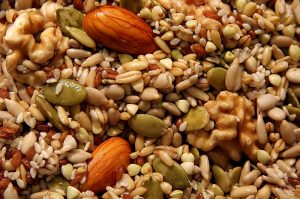 Other champions in the amount of calcium in its composition are seeds of poppy and sesame: in 100 grams of poppy there is almost 1500 mg of Ca and in sesame there is 975 mg, which is equal to 99% of the daily nom necessary for a person. Slightly less calcium is in sesame oil – about 6% in a tablespoon. These modest at first glance seeds are more than just decoration buns for burgers.
Other champions in the amount of calcium in its composition are seeds of poppy and sesame: in 100 grams of poppy there is almost 1500 mg of Ca and in sesame there is 975 mg, which is equal to 99% of the daily nom necessary for a person. Slightly less calcium is in sesame oil – about 6% in a tablespoon. These modest at first glance seeds are more than just decoration buns for burgers.
Sesame seeds can help not only lower blood pressure and reduce inflammation, but even fight against certain types of cancer. Add this product to salads or stew with spinach.
The composition of poppy seeds in large quantities includes copper, calcium and magnesium. This combination of beneficial substances helps:
- to strengthen bone tissue,
- to raise a low level of hemoglobin.
Just think that when comparing modern drugs containing calcium and poppy, the second one will definitely win. In order to saturate your body with the necessary amount of calcium, it’s enough to chew about 50 grams of poppy seeds. Poppy and sesame seeds can become an indispensable source of calcium during a diet or strict fasting.
If you want to forget about calcium deficiency once and for all, then necessarily enter into your daily diet nut snack.
Preference is given to almonds, in which calcium is the most – 260 mg. It is a great source of calcium, very nutritious and delicious.
In addition, almonds are rich in:
- magnesium,
- phosphorus,
- iron
- and vitamin E.
In 100 gr. of dried or toasted almonds there is 74 mg of calcium, which will cover 7% of the daily rate. As for other nuts, Brazilian nuts, cashews, walnuts and cedar nuts are great for your menu as they contain other useful vitamins and minerals as well. For example, 45 mg of calcium to the body will be provided by six medium-sized Brazil nuts. This will be 4% of the daily rate. Also one such nut will provide a daily norm of selenium. An additional advantage of seeds and nuts is that no complicated manipulation is required for their use. They can be added in salad, in fruit smoothies, in hot dishes or eat without any additional ingredients.
They are rich in magnesium, phosphorus, potassium, iron. In addition, the high fat content of nuts promotes better absorption of calcium.
Almonds are consumed in raw and fried form, used as a high-quality additive in confectionery products. Almonds are used in the production of liqueurs. In the production of beverages, almond shells are used, it not only aromates, but also improves the taste of the drink.
Important: If you are deficient in calcium, try to eat 100 grams of sesame daily and in a couple of weeks you will notice that your nails are denser and tighter (this is usually the first visual indication that you have enough calcium in your body).
Back
4. Vegetables, fruits and greenery as the source of calcium
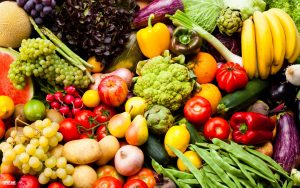 While these products have a relatively small percentage of calcium in their composition, they are low-calorie and during the day they can be eaten much more than the same nuts. For example, an excellent source of calcium is cabbage. 188 mg of calcium (19% of the daily allowance) is contained in 2 cups of raw chopped cabbage. It is the supernatant of calcium and antioxidants. Cabbage is ideal as a basis for salad. Especially useful are Peking and cauliflower, broccoli. Do not deny yourself your favorite sauerkraut in winter, when the body especially needs vitamin C and Ca.
While these products have a relatively small percentage of calcium in their composition, they are low-calorie and during the day they can be eaten much more than the same nuts. For example, an excellent source of calcium is cabbage. 188 mg of calcium (19% of the daily allowance) is contained in 2 cups of raw chopped cabbage. It is the supernatant of calcium and antioxidants. Cabbage is ideal as a basis for salad. Especially useful are Peking and cauliflower, broccoli. Do not deny yourself your favorite sauerkraut in winter, when the body especially needs vitamin C and Ca.
This category also includes such concentrated sources of calcium as orange juice: 500 mg of calcium (50% of the daily norm) is contained in one glass. Orange fresh is an excellent addition to breakfast. Enjoy a full glass of calcium and vitamin C. You can also make salmon fillets with orange juice.
65 mg of calcium (6% of the daily allowance) is contained in one medium-sized orange. This fruit is enriched not only with calcium, but also with vitamin C. Oranges are perfect for snacking during the day. They can also be added to salad. 107 mg of calcium (10% of the daily allowance) is contained in 8 pieces of common fig. In these dried fruits, the shock dose is not only calcium, but also antioxidants. Have a snack with dried figs during the day. Or you can brew jam from the dried fruit.
As for the greenery, especially a lot of calcium is contained in the leaves of:
- lettuce and dandelion,
- dill,
- basil,
- spinach,
- parsley.
For example, in 100 grams of spinach there is 136 mg. of calcium, which is 14% of the daily norm. Grape leaves – 289 mg / 100 g. – 29%, arugula – 160 mg / 100 g. – 16%, cabbage – 48 mg / 100 g. – 5%, broccoli – 47 mg / 100 g. – 5%.
Important: It should be noted that some vegetables with a high content of oxalic acid (for example, coriander, spinach and dill) interfere with the absorption of calcium. This should be kept in mind especially by those whose food is dominated by raw vegetables, fruits and greens – oxalic acid is neutralized by heat treatment.
Back
5. Fish as the source of calcium
 For proper assimilation of calcium, vitamin D is equally important, it is this balanced combination that fish can boast, especially some species:
For proper assimilation of calcium, vitamin D is equally important, it is this balanced combination that fish can boast, especially some species:
- Pink salmon: it is able to provide 18% of the daily requirement of the body.
- Sardines: they have completely escaped into fish leaders, because they contain one-third of the daily calcium needed by man. 321 mg of calcium (32% of the daily norm) is found in fillets of 7 sardines.
- Canned salmon: it contains 232 mg of calcium (23% of the daily norm) in 1/2 of the can. Salmon bones also contain calcium. In the canning process, they soften and are not noticeable when mixed with the rest of the contents.
Important: Try adding sardines to a Greek salad or eating them just like that to avoid calcium deficiency effectively and get not only calcium but omega-3 fatty acids.
How to know that you don’t get enough calcium: 10 Symptoms of calcium deficiency
- Weakness and fatigue.
- Painful sensations, spasms in the muscles.
- Pain in the bones, the appearance of gait disturbances.
- Growth disorders.
- Hypocalcemia (low level of calcium in the blood), hypocalcinosis (reduced calcium content in lime-containing organs, for example, in bones).
- Decalcification of the skeleton (lack of calcium in the bone tissue), bone fractures, deformity of the vertebrae, osteoporosis, deforming osteoarthritis.
- Disorders of the immune system.
- Urolithiasis
- Allergic diseases.
- Bleeding, lowering of blood coagulability.
Back
 Teeth and bones: the main function of the macroelement is the function of the structural material, the creation and maintenance of full teeth and bones. As part of the bone tissue, calcium is contained in two forms: free and bound. If the reserves of mineral matter in the free form are depleted, calcium is extracted from the bones to maintain its level in the blood. Every year, the bone is renewed in the body of an adult by 20%.
Teeth and bones: the main function of the macroelement is the function of the structural material, the creation and maintenance of full teeth and bones. As part of the bone tissue, calcium is contained in two forms: free and bound. If the reserves of mineral matter in the free form are depleted, calcium is extracted from the bones to maintain its level in the blood. Every year, the bone is renewed in the body of an adult by 20%.